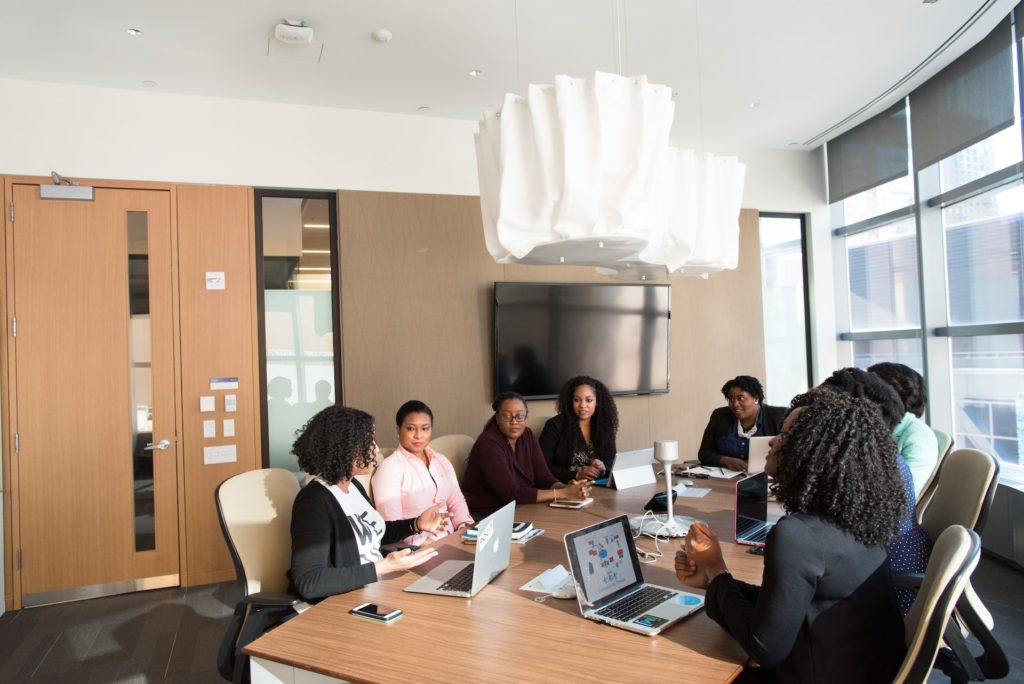Having a growth mindset is an essential trait that can help woman starting new businesses. A growth mindset is the belief that one’s abilities and talents can be developed through hard work, learning, and persistence.
This mindset encourages people to take on new challenges, develop new skills, and embrace failure as a part of the learning process.
In this blog post, we will discuss various growth mindset activities that can be incorporated into the workplace to foster a growth mindset culture for your new business.
Benefits of a Growth Mindset

The concept of a growth mindset is crucial for personal and professional development. Individuals with a growth mindset tend to be more open to new experiences, take on challenges, and view failure as an opportunity for learning and growth.
This attitude can lead to higher levels of personal development, increased resilience, and a more positive attitude towards work and life.
There are different ways to incorporate a growth mindset into our lives.
Next time you want to embrace a growth mindset, consider these growth mindset activities:
- Positive self-talk: Practice positive self-talk and reframe negative thoughts into positive ones. This can help build resilience and a more positive mindset.
- Vision board: Create a vision board to visualize goals and aspirations. This can be a great way to inspire and motivate you towards achieving your goals.
- Learning opportunities: Seek out learning opportunities to develop new skills and knowledge. This can help you continuously grow and adapt to changing circumstances.
- Collaboration: Collaborate with team members or colleagues to promote innovation and idea-sharing. This can help you learn from others and develop new perspectives.
Incorporating these growth mindset activities can lead to several benefits, including personal and professional development, increased resilience, and a more positive attitude towards work and life. By embracing a growth mindset, you can achieve success and reach your full potential.

Here are some of the advantages:
- Openness to new experiences: Individuals with a growth mindset tend to be more open to new experiences and opportunities. They are more likely to take on challenges and try new things, even if it means stepping outside of their comfort zone.
- Learning and growth: A growth mindset involves a willingness to learn and develop new skills. People with this mindset view failure as an opportunity to learn and grow, rather than as a personal failure.
- Resilience: Individuals with a growth mindset are more resilient and better able to cope with setbacks and challenges. They are better equipped to handle stress and adversity and are more likely to bounce back from setbacks.
- Positive attitude: People with a growth mindset tend to have a more positive attitude towards work and life. They are more optimistic and hopeful about the future and are more likely to approach challenges with a positive outlook.
Common Mistakes that May Hinder Women from Developing a Growth Mindset
While having a growth mindset can be beneficial, there are common mistakes that may hinder women from developing this mindset. Here are a few:
- Self-limiting beliefs: Women may hold self-limiting beliefs about their abilities and potential, which can prevent them from taking on new challenges and learning new skills. These beliefs may be reinforced by societal expectations or stereotypes and can be difficult to overcome.
- Fear of failure: Women may be more likely to fear failure than men, which can prevent them from taking risks and trying new things. This fear of failure may be rooted in societal expectations or a fear of judgement from others.
- Lack of support: Women may not receive the same level of support and encouragement as men when it comes to developing a growth mindset. They may face more barriers or obstacles when trying to pursue new opportunities or learn new skills, which can make it more difficult to develop a growth mindset.
- Perfectionism: Women may be more prone to perfectionism, which can prevent them from taking risks and trying new things. They may feel that they need to be perfect or have all the answers before they can act, which can prevent them from learning and growing.
Smart Goals

Setting SMART (Specific, Measurable, Achievable, Relevant, Time-bound) goals is a key activity that can help individuals develop a growth mindset. SMART goals allow individuals to focus their efforts on specific outcomes, measure their progress, and celebrate their successes along the way.
This process can help people develop new skills, gain confidence, and step outside of their comfort zones. Setting SMART goals is a key activity that can help individuals develop a growth mindset.
Here’s how to use SMART goals to develop a growth mindset:
- Specific: When setting goals, it’s important to be specific about what you want to achieve. This clarity helps to focus your efforts and gives you a clear target to work towards.
- Measurable: Goals should be measurable so that you can track your progress and celebrate your successes along the way. This activity helps to build confidence and motivation and reinforces the idea that hard work and persistence can lead to positive outcomes.
- Achievable: Goals should be challenging but achievable. Setting goals that are too easy may not provide enough motivation, while setting goals that are too difficult may lead to frustration and a sense of failure. Achievable goals help to build confidence and reinforce the idea that success is possible with hard work and persistence.
- Relevant: Goals should be relevant to your personal or professional growth. They should align with your values, interests, and long-term objectives. Relevant goals help to motivate you and provide a sense of purpose and direction.
- Time-bound: Goals should have a specific timeline or deadline. This helps to create a sense of urgency and provides a clear target to work towards. Time-bound goals also help to avoid procrastination and ensure that you are making progress towards your goals on a consistent basis.
When individuals set SMART goals, they are more likely to develop a growth mindset because they are focusing their efforts on specific outcomes, measuring their progress, and celebrating their successes along the way. This process helps individuals to develop new skills, gain confidence, and step outside of their comfort zones.
Smart Goals and Starting an Online Business

The SMART approach to goal setting is also applicable when starting a business. Here’s how:
Specific: When starting a business, it’s important to be specific about what you want to achieve. This clarity helps to focus your efforts and gives you a clear target to work towards.
For example, you may set a specific goal to launch your product or service within a certain timeframe.
Measurable: Goals should be measurable so that you can track your progress and celebrate your successes along the way. This process helps to build confidence and motivation and reinforces the idea that hard work and persistence can lead to positive outcomes.
For example, you may set a measurable goal to achieve a certain number of sales within a specific timeframe.
Achievable: Goals should be challenging but achievable. Setting goals that are too easy may not provide enough motivation, while setting goals that are too difficult may lead to frustration and a sense of failure. Achievable goals help to build confidence and reinforce the idea that success is possible with hard work and persistence.
For example, you may set an achievable goal to secure funding or to build a customer base within a specific timeframe.
Relevant: Goals should be relevant to your business objectives. They should align with your values, interests, and long-term vision for the business. Relevant goals help to motivate you and provide a sense of purpose and direction.
For example, you may set a relevant goal to expand your product or service offerings or to enter a new market.
Time-bound: Goals should have a specific timeline or deadline. This helps to create a sense of urgency and provides a clear target to work towards. Time-bound goals also help to avoid procrastination and ensure that you are making progress towards your goals on a consistent basis.
For example, you may set a time-bound goal to achieve profitability within a certain timeframe.
Personal Development

Personal development is an essential activity that can help individuals foster a growth mindset. While attending training sessions, participating in workshops, or seeking out new learning opportunities are great things, there are also fun growth mindset activities that can be incorporated into daily life.
The love of learning is a crucial aspect of personal development that can be fostered in many ways.
Here are some best practices for fun growth mindset activities that can promote personal development:
- Read books: Reading is a great way to learn new things, challenge your assumptions, and develop a deeper understanding of your strengths and weaknesses. Choose books that interest you and that will help you grow personally and professionally.
- Take up a new hobby: Trying something new, such as painting, cooking, or gardening, can be a great way to develop new skills and challenge yourself outside of your comfort zone.
- Attend events: Attending events, such as conferences or meetups, can provide new opportunities to learn, network, and grow.
- Volunteer: Volunteering can be a great way to develop new skills, gain new experiences, and give back to the community.
By incorporating these fun growth mindset activities into your daily life, you can foster personal development and cultivate a growth mindset. This, in turn, can lead to business growth, increased resilience, and a more positive attitude towards work and life.

Personal development activities are essential for individuals looking to foster a growth mindset. Here are some ways in which personal development activities can help:
Develop new skills and knowledge: Personal development activities, such as attending training sessions or participating in workshops, can help individuals learn new skills and gain knowledge in their field. By developing new skills and knowledge, individuals can expand their abilities and increase their confidence, which can help them tackle new challenges and take on new opportunities.
Challenge assumptions: Personal development activities can challenge individuals’ assumptions and beliefs. This can help them to identify and overcome limiting beliefs or biases that may be hindering their growth. By challenging assumptions, individuals can develop a more open and flexible mindset, which can lead to increased creativity and innovation.
Gain a deeper understanding of strengths and weaknesses: Personal development activities can help individuals to gain a deeper understanding of their strengths and weaknesses. This self-awareness can help individuals to identify areas for improvement and focus their efforts on personal growth. By working to overcome their weaknesses and build on their strengths, individuals can develop a more resilient and adaptable mindset.
Embrace lifelong learning: Personal development activities encourage individuals to embrace lifelong learning. By staying curious and seeking out new learning opportunities, individuals can continue to grow and develop throughout their lives. This can help individuals to stay relevant in their field and adapt to changing circumstances and challenges.
Signs of a Growth Mindset

Individuals with a growth mindset tend to exhibit certain behaviors and attitudes. They tend to be more willing to take on challenges, embrace failure as a learning opportunity, and seek out new experiences.
They also tend to have a positive attitude towards their work and colleagues and are more likely to be open to feedback and criticism.
Behaviors and Attitudes of Individuals with a Growth Mindset
Individuals with a growth mindset tend to exhibit certain behaviors and attitudes that set them apart from those with a fixed mindset. Here are some of the common behaviors and attitudes of individuals with a growth mindset:
- Willingness to take on challenges: Individuals with a growth mindset are more likely to take on challenges and try new things, even if it means stepping outside of their comfort zone. They see challenges as an opportunity to learn and grow, rather than as a threat to their abilities.
- Embracing failure as a learning opportunity: Individuals with a growth mindset view failure as an opportunity to learn and grow, rather than as a personal failure. They see failure as a natural part of the learning process and use it to improve and develop new skills.
- Seeking out new experiences: Individuals with a growth mindset are curious and seek out new experiences and opportunities. They are open to new ideas and perspectives and are willing to explore different paths and possibilities.
- Positive attitude towards work and colleagues: Individuals with a growth mindset tend to have a positive attitude towards their work and colleagues. They approach challenges with a positive outlook and see their colleagues as potential collaborators and sources of support.
- Openness to feedback and criticism: Individuals with a growth mindset are more likely to be open to feedback and criticism from others. They see feedback as an opportunity to learn and improve and are willing to take constructive criticism to grow and develop.

Here are some questions that you can ask herself to see if she has a growth mindset:
- Do I believe that my abilities can be developed with hard work and persistence?
- Am I willing to take on new challenges and step outside of my comfort zone?
- Do I view failure as an opportunity to learn and grow, rather than as a personal failure?
- Am I open to feedback and criticism, and do I see it as an opportunity to learn and improve?
- Do I seek out new experiences and opportunities to learn and grow?
- Am I willing to embrace change and try new things, even if it means taking risks?
- Do I approach challenges with a positive attitude and a belief that I can overcome them?
- Do I believe that I can develop new skills and abilities, even in areas where I may currently struggle?
- Am I willing to put in the hard work and effort required to achieve my goals and pursue my passions?
- Do I view the success of others as an inspiration and motivation for my own growth and development?
By asking these types of questions, women can assess their mindset and identify areas where they may need to focus on developing a growth mindset. Additionally, these questions can serve as a starting point for women to set goals and act towards developing a growth mindset.
Growth Mindset Culture

Creating a growth mindset culture within the workplace can be an effective way to encourage employees to adopt a growth mindset.
This can involve setting clear expectations around learning and development, providing opportunities for training and development, and recognizing and rewarding individuals who demonstrate a growth mindset.
Encouraging employees to take risks, share their ideas, and collaborate with others can also help foster a growth mindset culture.
Creating a growth mindset culture within the workplace can be an effective way to encourage employees to adopt a growth mindset.
Here are some ways to create a growth mindset culture:
Set clear expectations: Setting clear expectations around learning and development is key to creating a growth mindset culture. This involves communicating to employees that learning and growth are important values within the organization and that it is expected of them to continuously develop their skills and abilities.
Provide opportunities for training and development: Providing opportunities for training and development is another important aspect of creating a growth mindset culture. This can involve offering workshops, training programs, and other learning opportunities to employees.
Recognize and reward growth mindset behaviors: Recognizing and rewarding individuals who demonstrate a growth mindset is an important way to reinforce the importance of this mindset within the organization. This can involve acknowledging employees who take on new challenges, embrace failure as a learning opportunity, and seek out new experiences.
Encourage risk-taking and idea-sharing: Encouraging employees to take risks, share their ideas, and collaborate with others can also help foster a growth mindset culture. This involves creating an environment where employees feel comfortable stepping outside of their comfort zone and contributing their unique perspectives and ideas.
Lead by example: Leaders within the organization play an important role in creating a growth mindset culture. By modeling growth mindset behaviors and attitudes, leaders can inspire and motivate employees to adopt a similar mindset.
Creating a growth mindset culture within the workplace and in your new business involves setting clear expectations, providing opportunities for training and development, recognizing, and rewarding growth mindset behaviors, encouraging risk-taking and idea-sharing, and leading by example.
By fostering a growth mindset culture, organizations can encourage employees to adopt a growth mindset and ultimately drive innovation, collaboration, and success.

List of Growth Mindset Activities You Can Start Doing Today – Here are some examples of growth mindset activities that can be incorporated into the workplace:
- Mindset Assessment: Encourage employees to take a mindset assessment to understand their current mindset and identify areas for growth.
- Stretch Assignments: Assign challenging tasks or projects to employees that require them to learn new skills and step outside of their comfort zones.
- Learning Opportunities: Provide opportunities for employees to attend workshops, conferences, or training sessions to develop new skills and knowledge.
- Celebrate Failure: Celebrate failures as learning opportunities and encourage employees to share their failures and what they learned from them.
- Mentorship Programs: Implement a mentorship program where experienced employees can share their knowledge and expertise with newer employees.
- Encourage Feedback: Encourage employees to seek out feedback and criticism from their colleagues and supervisors to help them identify areas for improvement.
Final Takeaways

The benefits of a growth mindset, the importance of setting SMART goals, the role of personal development activities in fostering a growth mindset, and the common behaviors and attitudes of individuals with a growth mindset.
In addition, creating a growth mindset culture within the workplace can be an effective way to encourage employees to adopt a growth mindset.
This can involve setting clear expectations, providing opportunities for training and development, recognizing, and rewarding growth mindset behaviors, and encouraging risk-taking and idea-sharing.
Ultimately, developing a growth mindset and fostering a growth mindset culture can help individuals and businesses achieve success and reach their full potential.
By embracing challenges, seeking out new experiences, and viewing failure as a learning opportunity, individuals can continue to grow and develop throughout their careers, while businesses can drive innovation and growth.
